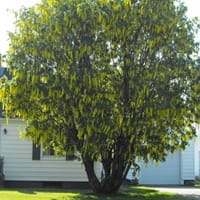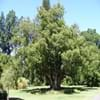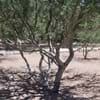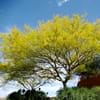Life Span
Perennial
Perennial
Origin
India, China
Brazil
Types
Bead tree
Not available
Habitat
Forest margins, Roadsides
Shady Edge, Woodland Garden Dappled Shade
USDA Hardiness Zone
8-15
11-15
Sunset Zone
H1, H2, 6, 7, 8, 9, 10, 11, 12, 13, 14, 15, 16, 17, 18, 19, 20, 21, 22, 23, 24
H1, H2, 23, 24
Habit
Oval or Rounded
Upright/Erect
Flower Color
Lavender
Yellow, Lemon yellow
Flower Color Modifier
Bicolor
Bicolor
Fruit Color
Yellow
Gray Green
Leaf Color in Spring
Green, Dark Green
Green
Leaf Color in Summer
Dark Green
Green
Leaf Color in Fall
Dark Green
Green
Leaf Color in Winter
Dark Green
Green
Leaf Shape
Pinnate
Compound
Plant Season
Spring, Summer, Fall, Winter
Spring, Summer, Fall
Sunlight
Full Sun, Partial Sun, Partial shade
Full Sun, Partial Sun, Partial shade
Type of Soil
Clay, Loam, Sand
Loam
The pH of Soil
Acidic, Neutral, Alkaline
Acidic, Neutral
Soil Drainage
Average
Average
Bloom Time
Early Spring, Spring, Late Spring
Summer, Late Summer
Tolerances
Cold climate, Drought, Pollution, Soil Compaction, Variety of soil types
Drought
Where to Plant?
Ground
Ground
How to Plant?
Rooted stem cutting, Seedlings, Stem Planting
Budding, Grafting, root cutting, Seedlings
Plant Maintenance
Low
Medium
Watering Requirements
Average Water Needs, Medium, Requires regular watering, Requires watering in the growing season, Water daily during growing season, Water less during winter
Average Water Needs, Do Not over Water, Keep the Soil well drained, Requires more often in extreme heat, Requires regular watering
In Summer
Ample Water
Lots of watering
In Spring
Less Watering
Moderate
In Winter
Less Watering
Average Water
Soil pH
Acidic, Neutral, Alkaline
Acidic, Neutral
Soil Type
Clay, Loam, Sand
Loam
Soil Drainage Capacity
Average
Average
Sun Exposure
Full Sun, Partial Sun, Partial shade
Full Sun, Partial Sun, Partial shade
Pruning
Prune if you want to improve plant shape, Remove damaged leaves, Remove dead leaves, Remove dead or diseased plant parts, Remove deadheads
Remove damaged leaves, Remove dead branches, Remove dead leaves
Fertilizers
Fertilize every year, fertilize in growing season, Less fertilizing
All-Purpose Liquid Fertilizer
Pests and Diseases
Insects, Red blotch
Canker, Caterpillars, Root Pathogen
Plant Tolerance
Cold climate, Drought, Variety of soil types
Drought
Flower Petal Number
Single
Single
Foliage Texture
Coarse
Coarse
Foliage Sheen
Glossy
Glossy
Attracts
Birds, Butterflies
Butterflies
Allergy
Toxic
allergic reaction, poisonous if ingested, Skin irritation
Aesthetic Uses
Beautification, Landscape Designing, Showy Purposes
Formal Garden, Used in parkland
Beauty Benefits
No Beauty Benefits
Not Available
Environmental Uses
Absorbs greenhouse gases, Absorbs huge amounts of CO2, Air purification, Amazing growth rate, Erosion control, Food for birds, Food for insects, Forms dense stands, Nesting sites for birds, No fertilizer, pesticides, or herbicides needed, Prevent Soil Erosion, Shadow Tree, Shelter for wildlife, Soil protection, soil stabilisation, Used to establish native woodland, Very little waste, Wildlife, Windbreak
Air purification
Medicinal Uses
No Medicinal Use
Vomiting
Part of Plant Used
Seeds, Stem, Tree trunks
Seeds
Other Uses
Air freshner, Showy Purposes, Used as firewood, Used as Ornamental plant, Wood is used for making furniture, Wood is used for ship building, Wood is used fore making tools, Wood is used in construction, Wood log is used in making fences
Pesticide, Used as Ornamental plant, Wood is used for making furniture
Used As Indoor Plant
No
No
Used As Outdoor Plant
Yes
Yes
Garden Design
Shade Trees
Feature Plant, Shade Trees, Tropical
Botanical Name
MELIA azedarach
LOPHANTHERA lactescens
Common Name
Chinaberry Tree
Golden Chain Tree
In Hindi
Chinaberry ट्री
Laburnum
In German
Chinaberry -Baum
Goldregen (Pflanze)
In French
Chinaberry Arbre
Laburnum
In Spanish
Chinaberry Arbre
Laburnum
In Greek
chinaberry Δέντρο
Laburnum
In Portuguese
azederaque
Laburnum
In Polish
azederaque
Złotokap
In Latin
Chinaberry ligno
Laburnum
Phylum
Magnoliophyta
Tracheophyta
Class
Magnoliopsida
Magnoliopsida
Family
Meliaceae
Fabaceae
Clade
Angiosperms, Eudicots, Rosids
Angiosperms, Eudicots, Rosids
Tribe
Melieae
Not Available
Subfamily
Meloideae
Faboideae
Number of Species
Not Available
Season and Care of Chinaberry Tree and Golden Chain Tree
Season and care of Chinaberry Tree and Golden Chain Tree is important to know. While considering everything about Chinaberry Tree and Golden Chain Tree Care, growing season is an essential factor. Chinaberry Tree season is Spring, Summer, Fall and Winter and Golden Chain Tree season is Spring, Summer, Fall and Winter. The type of soil for Chinaberry Tree is Clay, Loam, Sand and for Golden Chain Tree is Loam while the PH of soil for Chinaberry Tree is Acidic, Neutral, Alkaline and for Golden Chain Tree is Acidic, Neutral.
Chinaberry Tree and Golden Chain Tree Physical Information
Chinaberry Tree and Golden Chain Tree physical information is very important for comparison. Chinaberry Tree height is 910.00 cm and width 610.00 cm whereas Golden Chain Tree height is 1,520.00 cm and width 460.00 cm. The color specification of Chinaberry Tree and Golden Chain Tree are as follows:
Chinaberry Tree flower color: Lavender
Chinaberry Tree leaf color: Green and Dark Green
Golden Chain Tree flower color: Yellow and Lemon yellow
- Golden Chain Tree leaf color: Green
Care of Chinaberry Tree and Golden Chain Tree
Care of Chinaberry Tree and Golden Chain Tree include pruning, fertilizers, watering etc. Chinaberry Tree pruning is done Prune if you want to improve plant shape, Remove damaged leaves, Remove dead leaves, Remove dead or diseased plant parts and Remove deadheads and Golden Chain Tree pruning is done Remove damaged leaves, Remove dead branches and Remove dead leaves. In summer Chinaberry Tree needs Ample Water and in winter, it needs Less Watering. Whereas, in summer Golden Chain Tree needs Lots of watering and in winter, it needs Average Water.





